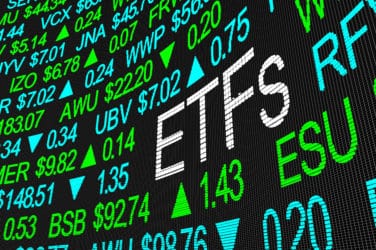
The lines of demarcation between actively-managed investment vehicles are getting fuzzier with the advent of non-transparent, actively-managed ETFs.
Black Rock, State Street, Eaton Vance and T. Rowe Price, among others, have filed applications with the Securities and Exchange Commission (SEC) to develop actively managed non-transparent ETFs that will disclose individual holdings every three months, just like mutual funds. These hybrid ETFs are also known as exchange-traded managed funds (ETMFs).
“What everybody is talking about today is non-transparent active ETFs, where a fund can change their basket all the time, and market makers don’t what their actual underlying stocks are,” said Phil Mackintosh, global head of trading strategy at Credit Suisse. “These active ETFs would look more like actively managed mutual funds.”
Mackintosh noted that these are different from transparent actively-managed ETFS. “There have been ETFs that pick stocks, which I would consider actively managed ETFs, for years. But these are transparent actively-managed ETFs, where the target portfolio is published daily and can be accurately hedged by market makers. Fund houses like PowerShares, WisdomTree as well as yield and volatility weighted ETFs offered by other providers are selecting stocks and stock weights based on specific factors that result in non-index weight portfolios.”
The index ETF space became saturated around 2006, noted Mackintosh, with State Street, Blackrock, and Vanguard owning a lot of the market share of market cap index weighted products. “Since then, most new entrants aren’t classic index funds, many are leveraging their reputation as stock pickers,” he said. “Pimco is a company that has had the notable success with this in bond ETFs, where they’ve used their platform of active bond management to launch active bond ETFs.”
Since ETFs track an underlying index, the ETF may trade at a premium or discount to what it’s really worth. Reasons for premiums or discounts include liquidity of the underlying securities, liquidity of the ETF itself, costs associated with executing the underlying names, etc.
“We try to give our customers a menu of options for obtaining best execution, not only by finding the best price in the secondary market, but we also observe how the underlying names trade in the primary. In addition ETFs trade differently depending on the time of day, so we try our best to educate our customers on ways they can receive the best execution possible depending on what name they are looking to enter/exit,” said Mo Bajaj, director of ETF and portfolio trading services at ETF market maker WallachBeth. “Timing is an important aspect when trading any product. Certain names trade better earlier in the day and as the day progresses, spreads can widen.”
WallachBeth has been active in helping to execute both liquid and illiquid ETFs, such as emerging market and fixed income names, “which we have been able to provide our customers with very competitive pricing for,” said Bajaj.






